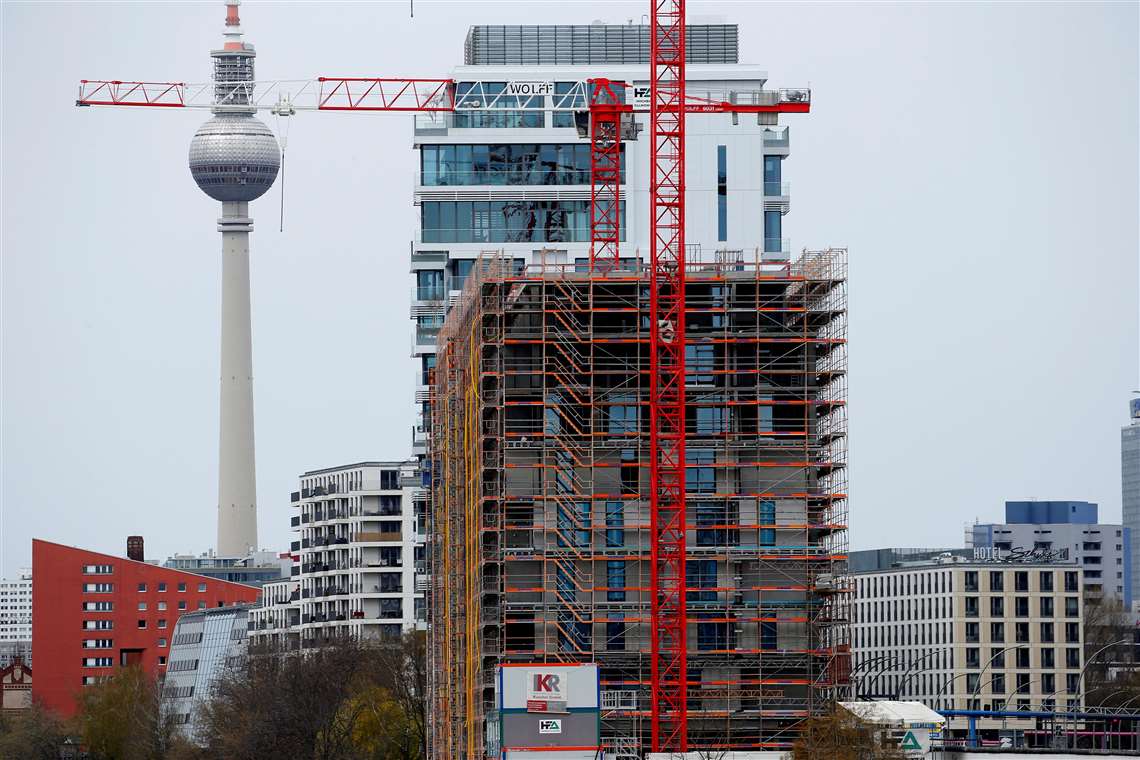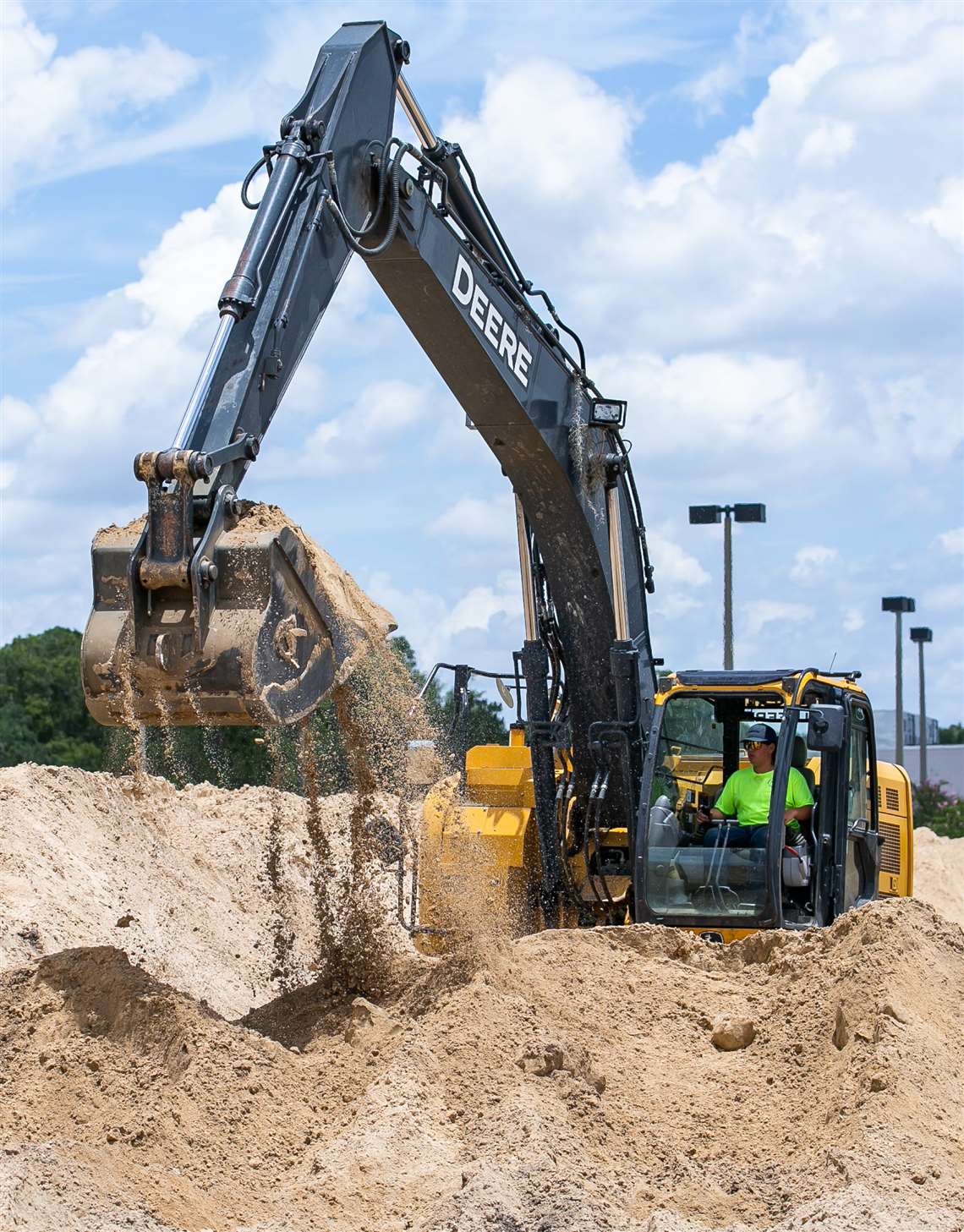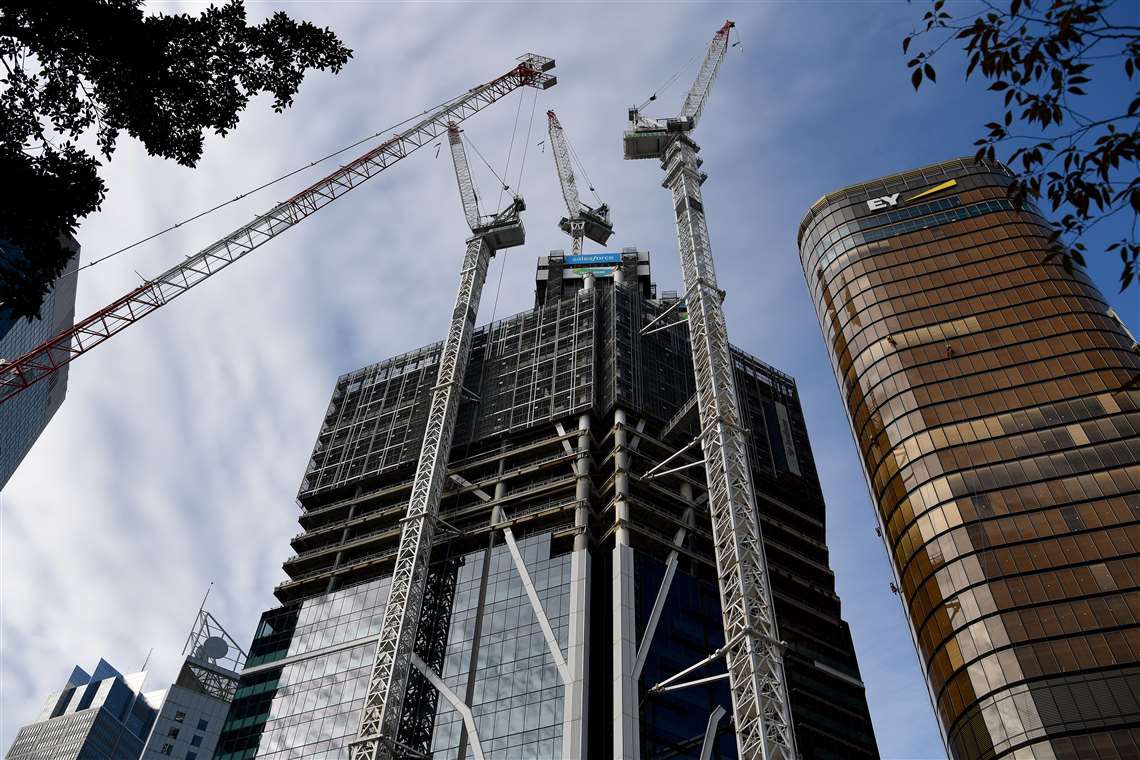Global construction struggles with materials shortages and prices
07 June 2021
Growing supply chain issues are endangering the construction industry’s recovery and with it the economic recovery of many nations worldwide, according to industry analysts and construction trade associations.
Amid growing demand, a lack of ready construction materials and products is said to be compounding challenges such as soaring materials prices, ongoing coronavirus measures and worker shortages, leaving many contractors unable to confidently move forward with major projects.
 A residential tower block under construction in Berlin, Germany, pictured in mid-April 2021. (Photo: REUTERS/Michele Tantussi.
A residential tower block under construction in Berlin, Germany, pictured in mid-April 2021. (Photo: REUTERS/Michele Tantussi.
While supply chain disruptions are an issue in almost every sector, the fragility of those in construction is now being exposed, with construction associations looking to governments for help – particularly in allowing for the revision of project costs and deadlines.
European deadlines hit
The president of the European Construction Industry Federation (FIEC), Professor Thomas Bauer, in an open letter to the European Commission, described how delays in receiving materials are impacting European contractors.
“Suppliers are often reluctant to agree to a specific delivery deadline. With the constantly changing market conditions, this means that suppliers are therefore also unable to specify a final delivery price for basic materials. Consequently, construction companies cannot confirm the final price for their completed works and services.”
Bauer also expressed his “alarm about the significant price increase in construction related raw materials and products in Europe” – a knock-on effect of the stretched supply chain.
He cited reinforcing bars, which he said had seen price rises of 110% in Italy between November 2020 and March 2021. In Germany and France, he added, the product had increased in price by more than 70%.
In the case of steel, Bauer pointed a finger at China – responsible for more than 50% of the world’s steel production. He said the country was currently “hogging resources”, with its construction sector utilising 40% of all the steel it produces.
Germany & France
In Germany, which is Europe’s largest construction market, Felix Pakleppa, general Manager of the Central Association of the German Construction Industry (ZDB), said, “Looking ahead to the coming months, we are very concerned about the problems in the supply chain with construction materials.
“In the case of plastics and wood, deliveries are often not made, while there are significant price increases in the case of steel and metals. In the case of wood, for example, there is now an increase of 35.7% compared to the previous year and of 27.2% compared to December 2020.”
Pakleppa said the bottlenecks have the potential to bring construction sites to a standstill in summer; “Our companies fear construction site stoppages and short-time work”.
Reuters reported that Germany’s ifo Institute found in its survey for May that 43.9% of builders reported problems in sourcing building materials, up from 23.9% in April. The infrastructure sector was less affected at 33.5%, but that was an increase from 11.5% in April.
“Capacity utilization in the industry is still high,” said Ifo expert Felix Leiss. “But the supply bottlenecks are worrying more and more companies.”
Meanwhile in France, construction association FNTP (National Federation of Public Works) welcomed government proposals that would protect contractors from contractual fines over project delays or disruption caused by “souring prices of raw materials or shortages of supply from companies”.
The French government has encouraged all public clients to grant extensions to deadlines and has set up a new mediation process for the industry.
Bruno Cavagné, President of the FNTP, said; “The disorganization resulting from the difficulties related to raw materials encountered by public works companies on many sites constitutes an additional brake for our companies.
“The Government’s announcements are therefore common sense. They are the translation of our repeated warnings and of [the Prime Minister] to see the economy restart as quickly as possible, which we all wish for.”
United States inflation
In the US, a government index that measures the selling price for goods used in construction jumped 3.5% in the month to March, while the annual increase to March was reported to be 12.9%. Both the monthly and yearly increases were said to be the highest recorded in the 35-year history of the index.
 Contractor Marion Rock is working on a new TownPlace Suites by Marriott in Ocala, Florida. (Photo: Doug Engle, USA Today Network via Reuters Connect)
Contractor Marion Rock is working on a new TownPlace Suites by Marriott in Ocala, Florida. (Photo: Doug Engle, USA Today Network via Reuters Connect)
Speaking in April, Ken Simonson, chief economist with the Associated General Contractors of America (AGC) said the report “documents just some of the challenges contractors are experiencing with fast-rising materials costs, lengthening or uncertain delivery times, and rationing of key inputs.
“These problems,” he said, “threaten to drive up the cost and completion time for many vital projects and potentially set back the recovery in construction employment.”
Simonson said the steep material cost increases tell only part of the story; “They are based on prices the government collected a month ago, and they fail to capture the notices contractors are receiving daily about longer lead times, shipments held to a fraction of previous orders, and other challenges.”
One example is a potential shortage of steel form ties that are used in concrete formwork. The US-based Concrete Foundations Association (CFA), representing cast-in-place contractors, has announced an industry-wide effort to mitigate the shortage.
While concrete form ties are manufactured domestically, to meet rising demand and address cost issues, a significant volume of the supply has transitioned to imported ties from China over the last decade.
Australian infrastructure hope
Echoing the strategies of governments in Europe and North America, the Australian government is pinning its hopes for recovery on an infrastructure-led economic revival and has directed significant sums in stimulus packages towards the sector.
This makes supply chain issues an even greater problem, with stimulus cash under-utilised due to a lack of the materials required to drive projects forward.
The Reserve Bank of Australia recently said supply chain disruptions would cause a “short-term inflation bump”.
The bank added that “In some cases, the rebound in global goods trade had outstripped the ability of global supply chains to cope, which had contributed to delays and upward price pressures for key components…”
Philip MacGregor, a materials supplier based in Sydney, told the Financial Review that the shortage of materials such as timber and steel was now “overwhelming”.
 A high-rise project underway in the central business district of Sydney on May 20 this year. (Photo: AAP Image/Bianca De March via Reuters Connect.)
A high-rise project underway in the central business district of Sydney on May 20 this year. (Photo: AAP Image/Bianca De March via Reuters Connect.)
Describing the current state of construction in the Sydney region, he said, “Everything is going full steam ahead to the point where supply can’t keep up, whether it be labour or raw materials.”
He added that many builders were now stockpiling materials – while those who had not were having to turn down potentially lucrative projects.
In March, the container vessel Ever Given became stuck in the Suez Canal – the shortest sea link between Europe and Asia and a route responsible for almost a third of the world’s container traffic – completely blocking it for almost a week.
At the time of the Suez blockage, Moody’s Investor Service said, “Very high consumer and industrial demand, a global shortage of container capacity and low service reliability from global container shipping companies ... has made supply chains highly vulnerable to even the smallest of external shocks. In that context, the timing of this event could not have been worse.”
Clearly, a serious problem for those companies operating with ‘just-in-time’ supply chains and unable to fulfil contracts, the Ever Given event also serves to highlight the continuing vulnerability of industries such as construction, when vital materials become unavailable or prices soar, due to their scarcity.
STAY CONNECTED


Receive the information you need when you need it through our world-leading magazines, newsletters and daily briefings.




